Case Studies.
Add Case Study
Our Case Study database tracks 22,657 case studies in the global enterprise technology ecosystem.
Filters allow you to explore case studies quickly and efficiently.
Download Excel
Filters
-
(6,653)
- (2,601)
- (2,127)
- (945)
- View all
-
(5,642)
- (2,469)
- (1,692)
- (826)
- View all
-
(5,571)
- (2,178)
- (1,766)
- (643)
- View all
-
(5,247)
- (2,179)
- (1,715)
- (1,321)
- View all
-
(2,881)
- (1,448)
- (574)
- (376)
- View all
- View all 15 Technologies
- (1,985)
- (1,985)
- (1,915)
- (1,679)
- (1,629)
- View all 42 Industries
- (8,728)
- (4,742)
- (3,618)
- (3,233)
- (2,947)
- View all 13 Functional Areas
- (3,304)
- (2,787)
- (2,603)
- (2,006)
- (1,630)
- View all 129 Use Cases
- (13,581)
- (5,296)
- (4,272)
- (3,520)
- (2,856)
- View all 9 Services
- (504)
- (432)
- (416)
- (382)
- (301)
- View all 1083 Suppliers
Selected Filters
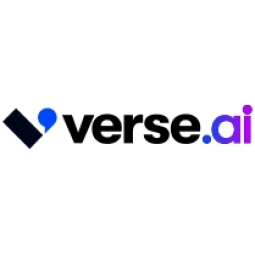
|
Pepperdine University Enhances Student Engagement with Verse
Pepperdine University, a leading institution for higher education, was facing challenges in effectively managing long-term follow-ups and setting appointments with prospective students. The university's staff was struggling to engage with prospective graduate student inquiries in a timely and efficient manner. This was particularly problematic for the Graduate Schools of Psychology & Education admissions team, who were tasked with nurturing and qualifying these leads. The lack of prompt engagement was leading to a lower response rate from prospective student inquiries, which in turn was affecting the university's ability to meet with more prospective students and increase their student intake.
|
|
|
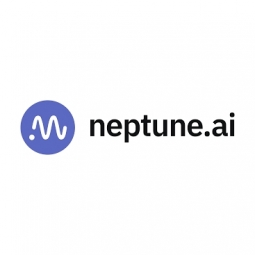
|
Brainly's Integration with Amazon SageMaker and Neptune for Enhanced Machine Learning Capabilities
Brainly, a leading global learning platform, faced a challenge with their machine learning-powered feature, Snap to Solve. The feature allows users to upload a photo of a problem, which the system then detects and provides solutions for. The Visual Search team, responsible for the Visual Content Extraction (VICE) system of Snap to Solve, used Amazon SageMaker to run their computing workloads and serve their models. However, as the number of training runs on their large compute architectures increased, they found that their logs from Amazon SageMaker needed to be trackable and manageable to avoid workflow bottlenecks. They needed a tool that could scale regardless of the experiment volume. While they tried using SageMaker Experiments for tracking, they found the tracking UX and Python client unsatisfactory.
|
|
|

|
Leveraging Machine Learning to Analyze Impact of Promotional Campaigns on Sales
deepsense.ai, an AI-focused software services company, was tasked with a project for a leading Central and Eastern European food company. The project involved using machine learning to analyze the impact of promotional campaigns on sales. The food company runs various promotional campaigns for different products and wanted to create a model that predicts the number of sales per day for a given product on a promotional campaign. The challenge was the complexity of the data involving a large corpus of data sources, hundreds of different products, contractors, thousands of contractors’ clients, different promotion types, various promotion periods, overlapping promotions, and actions of the competition. It was also difficult to determine whether the sales increase was caused by any of the promotions applied, by the synergy between them, or it took place regardless of any campaigns.
|
|
|

|
Waabi's Implementation of Neptune for Enhanced Experimentation Workflow and Resource Monitoring
Waabi, a company focused on developing the next generation of self-driving truck technology, faced a significant challenge in managing their large-scale experimentation workflow. Their Machine Learning teams, organized around different technical pillars, constantly launched experiments for different tasks, seeking model improvements by iteratively fine-tuning them and regularly comparing results against established benchmarks. The data involved in these experiments was diverse, including maps, LiDAR, camera, radar, inertial, and other sensor data. Keeping track of the data collected from these experiments and exporting it in an organized and shareable way became a challenge. The company also identified a lack of tooling for planning and building consistent benchmark datasets. They needed a solution that would allow them to share benchmark results in a constant place and format and retain data for later comparison after the end of a project.
|
|
|
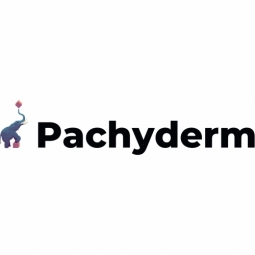
|
Optimizing Autonomous Driving with IoT: A Case Study of Woven Planet and Pachyderm
Woven Planet, a subsidiary of Toyota, is focused on building the safest mobility in the world with a particular emphasis on automated driving. The Automated Mapping team at Woven Planet is tasked with creating automotive-grade maps for use in automated and autonomous-driving vehicles. This requires the use of aerial orthographic projection, a method that has been used in the development of consumer-grade navigational maps. However, using this data to meet the rigorous requirements of automated driving at a continental scale is a significant challenge. The maps for automated driving applications need a level of detail, accuracy, and precision far beyond those of their consumer-grade counterparts. This requires processing large volumes of data. The Automated Mapping team needed an orchestration system that could scale to meet elastic workloads, easily toggle between structured and unstructured datasets, and provide long-lived pipeline stability for continuous, region-based map updates.
|
|
|
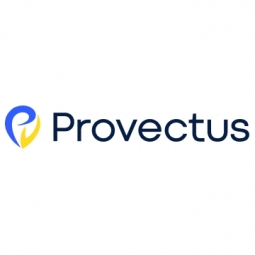
|
Carson Group's AI/ML Adoption for Enhanced Lead Scoring and Customer Acquisition
Carson Group Holdings LLC, a comprehensive ecosystem for advisors, was seeking ways to enhance their marketing efforts to help their investment advisor clients acquire new customers more effectively. They decided to adopt AI/ML, starting with a machine learning model for scoring leads received from Salesforce. The goal was to narrow down their leads, focusing on customers with the highest likelihood of investing, thereby reducing time spent filtering leads that are less likely to convert. This would optimize costs and drive growth for their clients more efficiently. Carson Group had the right data for training ML models and saw the potential to streamline the entire process of evaluating and scoring leads by their sales and marketing teams. They aimed to replace their existing predictive system, which relied on complex rules and heuristics, with a self-training machine learning solution for higher accuracy and efficiency in lead scoring.
|
|
|

|
Dynamo Software Inc. Enhances Document Classification with AI and Automation
Dynamo Software Inc., a leading cloud provider of alternative investment management software, was seeking to enhance its document classification platform through AI and automation. The platform was designed to store, classify, and transfer information and metadata from various documents to appropriate investments. However, Dynamo wanted to improve the accuracy of document classification and gain the ability to make predictions based on a document's content. The goal was to reduce the amount of repetitive manual work performed by their data team, lower operational costs, increase performance, and minimize the time needed for making decisions on client investment portfolios. The existing platform received thousands of various types of documents every month, some of which were manually added by managers. Dynamo wanted to significantly improve the accuracy of their existing ML tool, automate a portion of the data processing pipeline, and achieve at least 85% accuracy on new data.
|
|
|
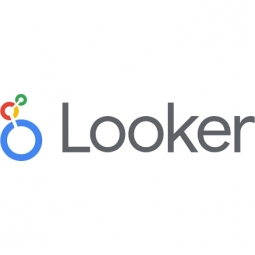
|
Brandfolder: Leveraging Google Cloud for Enhanced Digital Asset Management
Brandfolder, a Denver-based company offering digital asset management (DAM) solutions, was seeking to enhance its service offerings to provide high-impact customer experiences and increase its competitive edge. The company was looking to introduce new data-driven features without complicating the user experience. Key to meeting customers' unique business needs and competing in the fast-moving DAM industry was the integration of big data, artificial intelligence (AI), and machine learning (ML). However, Brandfolder needed a public cloud provider that could help it scale its data pipeline cost-effectively while providing access to advanced AI technologies. After trying two other cloud providers, Brandfolder decided to standardize on Google Cloud.
|
|
|

|
Brandwatch: Leveraging IoT for Enhanced Social Media Intelligence
Brandwatch, a digital consumer insights company, was facing a significant challenge in its business intelligence (BI) operations. The company needed to understand and support its clients' needs by analyzing trends and patterns in the way its platform was used. To achieve this, Brandwatch combined service usage data from Mixpanel with customer data in Salesforce. However, its existing infrastructure was not supportive of this integration. The data lived in disparate silos that required manual, time-consuming aggregation, making the insights less useful by the time the data was pulled together for analysis. The company was unable to analyze customer information together with data on how customers used its platform. This meant that the BI team had to manually combine both types of information on spreadsheets to create reports. The process was not only time-consuming but also inflexible, limiting the analysis Brandwatch could do.
|
|
|

|
Boosting Advertising Revenue for Publishers and Bloggers: A Case Study on Breaktime and Google Cloud
Breaktime, a Taiwan-based company founded in 2017, provides data consulting services to bloggers and publishers to generate advertising revenue. The company operates the Zi Media Network and the Zi Power Ads AI advertising allocation system. The goal of Zi Power Ads AI is to simplify the use of 'supply-side platforms' for publishers to sell digital advertising impressions via automated auctions. However, Breaktime faced challenges with their initial infrastructure. They launched Zi Power Ads AI on infrastructure in an internet data center in Taiwan and then moved to a cloud infrastructure provider to support increasing traffic volumes. However, they encountered reliability and stability issues, including virtual machine shutdowns that prevented Zi Power Ads AI from being available to publishers for extended periods. This led Breaktime to evaluate other providers.
|
|
|
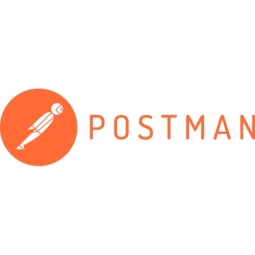
|
Cvent's Transformation of API Discovery and Quality with Postman Collections
Cvent, a global event management platform, faced significant challenges with its API discovery due to its adoption of a microservices architecture. The company's portfolio of private, partner, and public APIs had grown immensely, making API discovery almost impossible. This was further complicated by the presence of hundreds of software development teams located around the world. Without a central source of API truth, engineers often recreated functionality that was already available elsewhere in the company. Additionally, the lack of a common API toolset across the company led to less productive collaboration between teams and longer onboarding times for both internal and partner developers. The company's engineering leadership recognized the need for a solution that would address their API discoverability and exploration challenges while maintaining speed and ease of development.
|
|
|
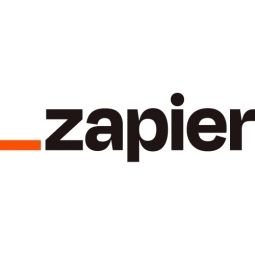
|
Streamlining Applicant Review Process: A Case Study on Launchpad LA's Use of Asana
Launchpad LA, one of the world’s top startup accelerators, was facing a significant challenge in managing their applicant tracking process. Initially, they relied on a spreadsheet to track their applicants, which proved to be inefficient and cumbersome, especially with non-numeric data filling the spreadsheet's rows and columns. The problem was exacerbated when the number of applicants increased to over 1,000 per class. The selection committee had to sift through more than 300 rows in a Google Spreadsheet to pare the pool down to eight startups. The process was not scalable and became 'very ugly, very quickly', according to Kyle Taylor, Launchpad’s former director of operations. The existing software solutions were targeted at large businesses with large budgets, which was not suitable for Launchpad LA. They needed a cost-effective solution that could handle a high volume of applications and streamline their review process.
|
|
|

|
BarkBox Streamlines Operations with Automated Emails and Notifications
BarkBox, a subscription service for dog treats, toys, and gifts, faced several operational challenges. The company, which also runs a charitable donations program, was struggling with the volume of donation requests from dog-related events and organizations across the United States and Canada. Each request had to be vetted and approved, a process that was causing a bottleneck. Additionally, managing in-office dog time, training requests, and remote work requests was proving to be a logistical challenge. The company needed to find a way to automate these processes without taking resources away from the development team.
|
|
|

|
Automating Facebook Leads: A Case Study on Be Epic, Inc.
Be Epic, Inc., a digital marketing agency based in Edmonton, faced the challenge of managing complex processes for their clients, including social media management, SEO, web design, and video production. A significant part of their work involved social media and advertising, where they had to generate and manage leads for their clients. They utilized Facebook Lead Ads for this purpose, but the process of managing multiple ad campaigns, targeting different audiences for each client, and transferring new leads between different apps was time-consuming and complicated. Without a proper process in place, they risked losing leads and wasting valuable time.
|
|
|

|
Revolutionizing Home Design with Automation: A Case Study on Cottage
Cottage, a San Francisco-based startup, is redefining the process of design, permitting, and construction in residential projects, particularly accessory dwelling units (ADUs). The company's unique approach involves handling the entire development process, from initial design to acquiring planning permissions, and through to construction. However, coordinating this multi-stage process with various stakeholders, including designers and general contractors, posed a significant challenge. The company needed to remain lean and agile, which required efficient tools to manage the process. Additionally, Cottage faced the challenge of integrating various tools used by different teams, such as sales and marketing, with industry-specific software used for site feasibility, design, and construction coordination. The company needed a solution that would allow them to collect and manage data from these disparate tools without overburdening their tech development resources.
|
|
|

|
Doubling Efficiency in Admissions: A Case Study on Clearbit & Zapier
Designation, a UX/UI designer bootcamp based in Chicago, was facing a challenge in managing their admissions process. With a small team of less than 10 full-time staff, every person was vital to the day-to-day operations. The admissions team, which initially consisted of only one person, had to contact and schedule interviews with each applicant to qualify them for the bootcamp. This process was time-consuming and inefficient, especially when dealing with unqualified leads. The challenge was to find a way to automate the process, pre-qualify leads, and make the operations more efficient, even in the absence of the team.
|
|
|

|
Automating Sales and Onboarding: A Case Study on Digioh's Use of Zapier
Digioh, a platform that runs eCommerce quizzes for businesses worldwide, faced a significant challenge as it grew. The company needed to scale its operations, particularly in sales and customer onboarding, without expanding its lean team of 15 employees. The CEO, Rishi Shah, who also led the company's sales activities, found it increasingly difficult to manually email new prospects as the company's customer base expanded. The process of triaging new sales leads needed to be automated to keep up with the growing demand. Additionally, the company needed an efficient way to onboard new customers once a deal was closed. The challenge was to automate these processes without compromising the high-touch, personalized service that Digioh was known for.
|
|
|

|
Efficient Lead Management through Automation: A Case Study on Dollar Flight Club
Dollar Flight Club, a small and remote startup, was facing a challenge in managing its resources efficiently. The company, which was bootstrapped into existence, had a significant overlap of responsibilities, especially in the early stages. Engineers hired for specific tasks often found themselves creating custom reports or connections for the sales and marketing teams. As the engineering demands increased, it became increasingly difficult to allocate resources for one-off projects on other teams. The company needed a solution that would allow them to do more work and save time, without constantly relying on the engineers.
|
|
|

|
Streamlining Scheduling and Data Management for eSight Eyewear with IoT
eSight Eyewear, a company that provides electronic glasses to help the visually impaired see again, was facing a significant challenge in managing their client scheduling and data management. The popularity of their product, the eSight 3, meant that they had to schedule a large number of in-person demonstrations to show how the technology works. Before implementing a new solution, each of their clients would spend at least 30 minutes responding to scheduling emails. Additionally, eSight's Vision Advocates spent about an hour's worth of work per client just on scheduling the first demonstration. This process involved multiple calls, including reminder calls and often missed calls. The company needed a solution that would streamline this process and improve the scheduling experience.
|
|
|

|
Automating Data Analysis: A Case Study of I Will Teach You To Be Rich
I Will Teach You To Be Rich (IWT), a content company founded by author Ramit Sethi, was facing a significant challenge in managing and analyzing their vast amount of data. The company produces a large volume of content, including books, courses, podcasts, and blog posts, attracting over a million readers every month. However, the team was struggling to track the performance of their content and understand their readers due to the time-consuming process of manually analyzing data. Basic reports on email subscribers took hours to create, leaving no time for critical analysis of the data. The team needed to answer questions like 'How many people read the guide we published in January?' but the process of exporting a report, opening it in a spreadsheet app, manually running a query, and consolidating the results was extremely time-consuming. The team realized they needed a data warehouse to store and easily access their data without the need for a dedicated data analyst.
|
|
|

|
Indiegogo's Journey to Automated Lead and Contact Management
Indiegogo, a crowdfunding giant, was grappling with the challenge of managing a large volume of leads and contacts manually. The company was dealing with repetitive tasks that were time-consuming and inefficient. The teams within the company were often siloed, leading to a lack of collaboration and data centralization. The Director of Inside Sales, Garrett Grohman, was dealing with hundreds of campaigns daily, and data entry for these campaigns was a full-time job for two people. Even after using Typeform to gather some of the information, the process was still labor-intensive and time-consuming.
|
|
|
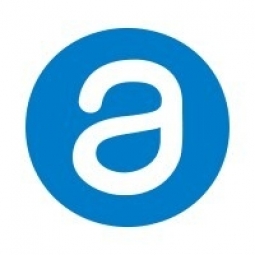
|
Streamlining Property Management with AppFolio Property Manager PLUS: A Case Study on The Apartment Company
The Apartment Company, a property management firm with over 4,000 multifamily units in San Diego, Las Vegas, and Reno, was facing significant challenges in managing their operations. The company was struggling with a slow and inefficient process of retrieving reports needed for resource disbursement and other tasks. The process involved multiple sources and multiple logins, which not only slowed down operations but also increased the chances of errors. The lack of a streamlined process for paying and reporting to owners was a major issue. The company was in dire need of a solution that could consolidate information, streamline processes, and improve customer service experiences.
|
|
|
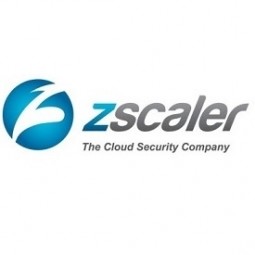
|
Business Continuity in the Cloud: Takeda Pharmaceutical Company's Remote Access Scaling
Takeda Pharmaceutical Company, the oldest pharmaceutical firm in the world, faced a significant challenge following its merger with Shire PLC. The merger resulted in a 'quite-disjointed' network architecture that needed to be integrated and secured. The company's IT team, led by CISO Mike Towers, was tasked with managing systems for a global workforce of over 70,000 employees spread across 110 countries. The company had begun rolling out Zscaler Internet Access (ZIA) in late 2018 to secure employee internet egress via the cloud and provide a consistent user experience. However, the merger accelerated Takeda's migration to the cloud, pushing the company to move towards a Zero Trust, user-to-destination model as quickly as possible. The challenge was to provide secure employee connectivity for every type of worker via local internet breakouts, while maintaining a consistent policy across all locations.
|
|
|
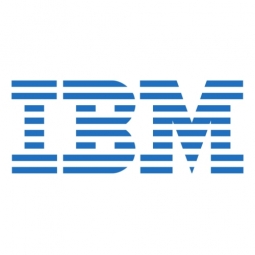
|
Royal Canin: Enhancing capabilities and increasing efficiency with rollout of global ERP platform
Royal Canin, a leading global supplier of pet food, was looking to improve customer service and launch a digital transformation for online sales channels. However, a series of mergers and acquisitions had left the company with disparate IT systems and business processes, making it difficult to launch new initiatives quickly across its global market. The company was facing delays in implementing major changes across its worldwide network due to the need to incorporate each new process in a multitude of IT systems. This was compromising their ability to react rapidly to changes in the market, threatening to dull their competitive edge.
|
|
|
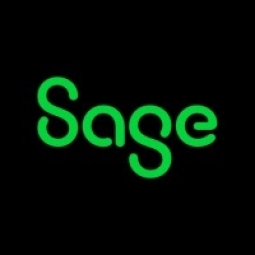
|
Hoya Vision Care Sees Business Clearly With Sage ERP X3
Hoya Vision Care of the Americas was constrained by an aging legacy application written by its parent company in Japan. The system was no longer capable of supporting the company’s fast-growing transaction volumes. The team was limited to creating only 100 invoices per day and required a new system that could handle an unlimited number of transactions, customers, and pricing options. They were seeking a more user-friendly system that could automate processes that were controlled by Excel® spreadsheets. Additionally, they were seeking a warehousing application that would enable them to increase their capacity and speed, provide better physical procedure control, and be tweaked to fit their specific business needs.
|
|
|

|
CN Helped Pine Printshop with a Responsive and Top-notch E-commerce Portal
To digitally expand their business, Pine Printshop was looking for a catalog-based site that would help people buy ready-made products (e.g. apparels, board pins, stickers, etc.) and even allow customers to personalize their own t-shirts, caps, and hoodies.
|
|
|
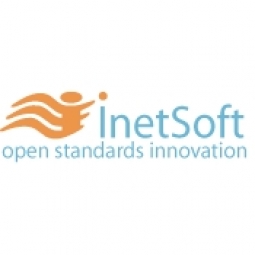
|
Flight Data Services Enhances Safety Reporting with InetSoft's Business Intelligence Software
Flight Data Services (FDS), a leading provider of flight data monitoring services, was faced with the challenge of translating raw black box flight data into operational business intelligence. This process is crucial for an aircraft operator’s safety program as it allows for the identification of trends and thorough investigation of minor incidents. These insights enable safety managers to improve operational procedures and training, raise awareness of safety issues within the operation, and assist management in making informed business decisions. FDS needed a solution that would allow them to provide their customers with a secure report portal from which they could instantly and interactively generate their own reports and drill down into data.
|
|
|

|
Multimedia Conglomerate Enhances Data Visualization with InetSoft's Dashboard Software
Grupo Multimedios, one of Mexico's largest media and entertainment companies, was facing challenges in creating effective executive performance management dashboards. The company had been using spreadsheets, pivot tables, and other BI tools for several years, but the dashboards they created were visually cluttered with lots of numbers. This made it difficult for the end-users to effectively understand and manipulate the data. The company was in need of a new BI tool that would be both easier to use and visually appealing. The goal was to provide a graphical representation of the key data to top management in a way that was easy to understand and manipulate.
|
|
|
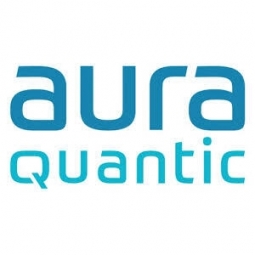
|
Click Seguridad Jurídica Streamlines Fiduciary Processes with AuraQuantic
Click Seguridad Jurídica, a Mexican Multiple Purpose Finance Company (SOFOM) specializing in fiduciary activities, was grappling with the increasing complexity of implementing and constituting financial products. The activity was becoming more restricted and subject to a vast number of legal operations. The company needed a solution that would allow for flexible and agile business process integration, capable of adapting to changes in demand and potential legal modifications that could impact its commercialization process. The CEO, Adolfo González Olhovich, began searching for a no-code tool that could meet these requirements and streamline over 20 processes including quotation, authorization, blacklist review, and integration and service contracts.
|
|
|

|
Digital Transformation of FOSIS through AuraQuantic Platform
The Solidarity and Social Investment Fund (FOSIS), a service of the Chilean Government, was faced with the challenge of standardizing its administrative processes to comply with the new regulatory framework established by the Law of Digital Transformation of the State (LTDE). The LTDE focuses on updating administrative procedures and document management in public administration through digital transformation. It also mandates that all communication related to administrative procedures between different public bodies must be carried out electronically. FOSIS had been using the AuraQuantic platform for over 14 years to automate different internal processes. However, with the introduction of the new LTDE framework, the institution needed to launch an ambitious project to align with the new regulations.
|
|




